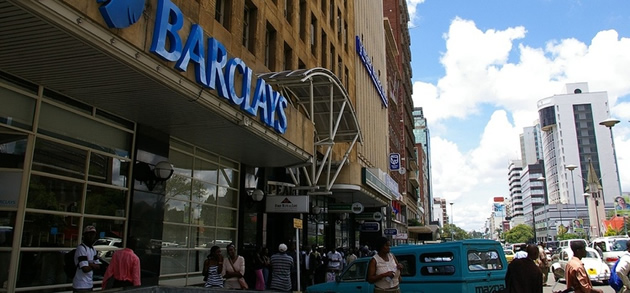Barclays Bank to increase offshore lines of credit


Barclays Bank Zimbabwe carries a clean balance sheet with NPLs well less than 2 percent of its loan book
Golden Sibanda Senior Business Reporter
BARCLAYS Bank Zimbabwe is looking to increase offshore lines of credit to $150 million by end of the first half with a view of providing affordable funding to its customers.
Managing director Mr George Guvamatanga said in an interview yesterday that Barclays had so far facilitated about $130 million loans and sees the figure increasing to over $150 million in three months.
Mr Guvamatanga said the offshore lines of credit were growing and came at significantly lower prices compared to the cost of funding from most local financial institutions.
He said most of the offshore loans it has facilitated were priced at single digit interest rates.
“The offshore lines of credit that we have organised are predominantly looking at agriculture, manufacturing industry and also players in distribution,” said Mr Guvamatanga, adding that “this demonstrates the confidence that we have in the economy.”
The Barclays Bank Zimbabwe managing director mentioned earlier when commenting on the group’s financials for the year to December 2014 that a number of local corporates were now going offshore directly to look for cheaper lines of credit.
Mr Guvamatanga said it had not been difficult to secure offshore funding for its local customers and clients because most of them were world class and high quality companies.
The bank will take advantage of its international network for lines of credit, especially opportunities within the Barclays Group to avail funds to clients at single digit interest cost.
He said going forward, Barclays in particular and the entire banking industry had little option, but to grow income in the wake of declining income margins, fees and commissions. This, he said, meant that size will matter in the banking industry to realise growth going forward.
Against this background, he said banking institutions would need to look at their models, distribution channels, unexploited market spaces and clients to make up for falling earnings due to falling margins, interest income, fees and commission banks charge.
The Barclays boss lamented the position taken by some mobile phone operators seemingly resisting sharing infrastructure for product diversity, low costs and better innovation for creating opportunities for new competition now haunting banks and MNOs.
“It has created disruption in that there are certain income lines that banks used to enjoy that they are no longer enjoying,” the Barclays MD said in an interview after the briefing.
However, he said not only MNOs had mobile banking, as banks had developed their own mobile banking platforms. But he said “If Banks and MNOs had collaborated, we could have captured more customers through innovative products in a more cost effective manner.”
The bank registered a profit after tax of $6,6 million for the year (2013: $3,0 million). This result translates to basic earnings per share of 0,31 cents (2013:0,14c per share). Total comprehensive income was $3,9 million, reflecting a 2 percent increase over prior year.
While the banking industry is battling non-performing loans averaging 16 percent, Barclays carries a clean balance sheet with non performing loans (NPLs) well less than 2 percent of its loan book.
The bank’s balance sheet continues to be sound and surpasses the current minimum capital requirements.
The total capital adequacy ratio of 20 percent at end of December 2014 is ahead of the Reserve Bank of Zimbabwe regulatory minimum of 12 percent.
Its liquidity ratio closed the period at 42 percent, ahead of the regulatory minimum of 30 percent.
Global Credit Rating Company issued its latest rating report on the bank in May 2014. The rating awarded was AA — on long term security class, rating outlook was assessed as stable.








Comments